Coronavirus: Aussie Test skipper Tim Paine says players ‘won’t be greedy’ as they face potential pay cuts
Aussie Test skipper Tim Paine says players won’t shy away from pay cuts but ‘need to know the absolute financial positions of the game’ before agreeing to anything that would help CA negotiate the COVID-19 crisis.
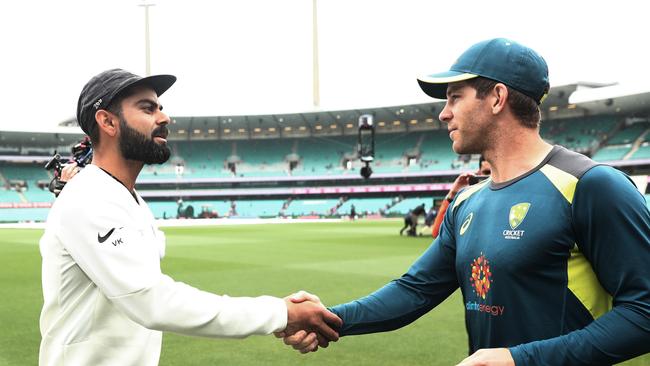
Cricket
Don't miss out on the headlines from Cricket. Followed categories will be added to My News.
- Stunning detail of Cricket Australia video meeting revealed
- How a tiny freebie destroyed Hansie Cronje
Aussie Test cricket captain Tim Paine says players won’t be greedy, as they wait to find out if they will be asked to take a pay cut.
Cricket Australia has stood down the vast majority of its staff for the rest of the financial year, citing uncertainty created by COVID-19, and is in talks with the Australian Cricketers’ Association (ACA) regarding players’ pay.
The Memorandum of Understanding (MoU) dictates that CA must, by April 30, provide the ACA with a list of national contracts plus revenue estimates for 2020-21.
Stream over 50 sports on-demand with KAYO SPORTS on your TV, computer, mobile or tablet. Just $25/month, no lock-in contract. Get your 14-day free trial and start streaming instantly >
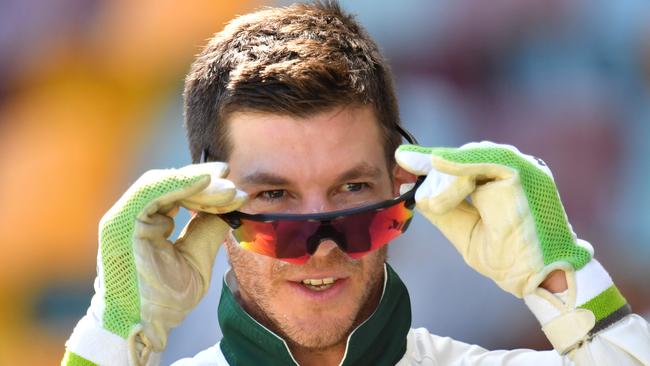
Wicketkeeper Paine said the players knew they would get less pay because of the revenue sharing model they have in place with CA.
He agreed however that the players needed to get a clearer idea of CA’s financial position before agreeing to any further cuts.
“Players need to know the absolute financial positions of the game and the players aren’t going to be greedy,” Paine said on ABC Radio.
“Our livelihood, all the people associated with the ACA and the players association, their livelihood is dependent on the game of cricket being healthy.
“So at the moment if a pay cut for us is on the cards and that keeps our game thriving well into the future, then that’s something we’ll certainly have to look at.”
Paine wasn’t that surprised at the financial state of cricket in Australia, given what was happening with the economy and in the business world.
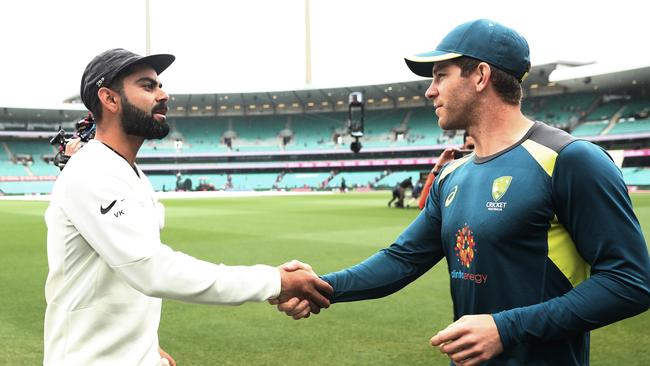
“I think commercially a lot of sponsors have been pretty hard hit and it’s obviously going to hit cricket Australia at some stage then as well,” Paine said.
“I think there’s a bit of safeguarding towards the potential of India not coming (on a tour in December/January) which is worth something like 250 to 300 million dollars.”
Paine said he hasn’t been briefed on any contingency plan if the coronavirus prevented the India tour.
“I haven’t just yet and I don’t want to be. I’m hoping that they get here, that would solve a lot of issues,” Paine said.
“I know there’s been some early talks with Cricket Australia and the government around the potential of what could be done, chartering planes and getting them in isolation when they get here to make sure that we can get India here.
“But apart from that I’ve only heard a few things on the rumour mill about maybe New Zealand coming out and us going there.”
Cricket boss under siege as fury in ranks surges

It has not been a good week in sport’s C-suite. On Monday Todd Greenberg left the chief executive’s office at rugby league headquarters, on Thursday Raelene Castle made a similar exit from behind the big desk at Rugby Australia, writes Peter Lalor.
Over the past week Cricket Australia’s Kevin Roberts has been a man who has looked every bit as under siege as the other two even if the crisis struck suddenly and without apparent warning.
Every day has dawned worse than the previous one for the cricket chief.
By Friday Roberts even found himself deflecting questions about his relationship with Justin Langer, head coach and figurehead of the new Australia side.
“We’re tight,” Roberts told ABC Grandstand. “We’re ultimately tight. We’re working through this respectfully and together in a situation that is far from ideal.”
Langer is working two days a week at the moment, supernumerary to the problems at hand.
Cricket’s announcement there was a crisis took all by surprise, it would be fair to say the two football codes were dealing with problems well before the pandemic hit, but Roberts was a man under no pressure and cricket a game that seemed best placed to ride out the catastrophic impact of the coronavirus on sport and life.
It is, however, clear that the source of anxieties about his leadership this week are related to past experiences as much as the way he’s handling current events.
Roberts had muck on his boots when he first walked into the chief executive’s office.
He is the man who has led the rebuild of Cricket Australia in the wake of the disastrous pay dispute and sandpaper crisis, but he was also the man who led negotiations in the fractious pay dispute in 2017 and he has had to spend much of his energy reassuring key stakeholders that he is no longer the person who made such a mess of the ill-fated move to break the revenue-share model.
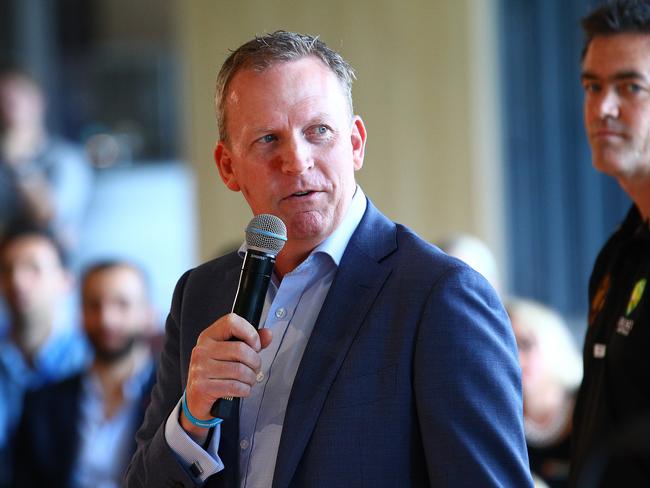
It was odd that cricket seemed to figure that the man who’d blown up the bridges at the behest of chairman David Peever would be the best to rebuild them but he made a fair fist of doing that by reaching out to the players and turning on his personal charm.
As recently as Tuesday he reaffirmed his commitment to the revenue-share model he worked so hard to break a few years earlier.
At the same time he indicated there would be cuts to players’ pay above and beyond what would occur naturally. The contradiction in the two positions is apparent but also understandable given revenue forecasts.
Players, staff and states however believe pain is being inflicted prematurely. Roberts brings another handicap to the situation and it surrounds his appointment by Peever to the role of chief executive officer.
He beat three candidates to the job, two remain in powerful positions and one is not too distant from power. All must retain some lingering disappointment about the process and outcome.
One, John Harnden, sits above Roberts as a director at Cricket Australia. He is part of the panel judging and overseeing the chief executive’s performance over the past seven days.
Another, Christina Matthews, is the chief executive of Western Australia which is one of the six states so hostile to the chief executive and his management of the situation. It is not the past informing the WACA’s hostility to head office at the moment and it is a hostility shared more or less by the five other states.
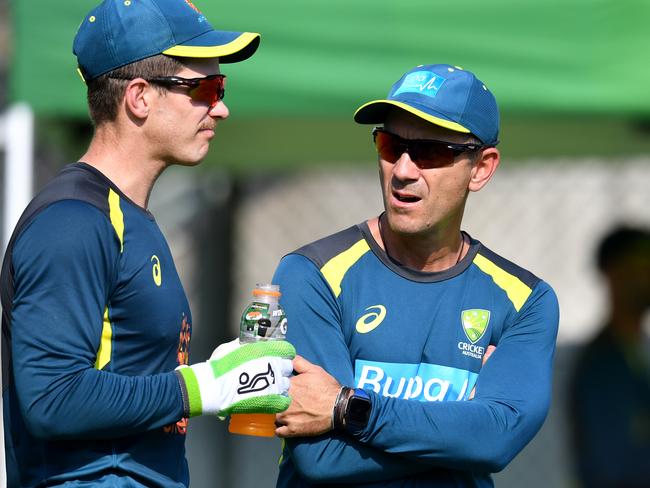
If Matthews was Roberts’ only problem he’d be better off, but she is part of a chorus and the loudest voices are coming from the most influential states.
The other unsuccessful candidate, John Warn, who seemed certain to be appointed, is not too far from cricket’s power circles at NSW these days and recently headed up a search for a new head of cricket in that state.
It is widely believed — rightly or wrongly — that Roberts got the job as chief executive because he was Peever’s man. The former chair was gone soon after when he lost the confidence of NSW over his handling of the cultural review, but the appointment had been made.
The problem this week has been that so many behaviours from the dark days of the contract disputes seem on display again.
As of lunchtime Friday the state associations and the Australian Cricketers Association were still waiting on financial details from head office and were refusing to accept any deals until they were tabled. Not natural allies, but thrown together in the storm, both groups cannot believe this situation.
The ACA cancelled a board meeting with Cricket Australia on Friday saying it can’t negotiate any financial adjustments when it does not have the details.
Some form of meeting eventually went ahead.
This was a pattern repeated over and over during the MOU negotiations. Other familiar patterns emerge.
The states, like the players, are pushing back against accepting demands their annual grants be slashed until they see the books.
During the MOU dispute head office only had the players to deal with, this time around the states are making the same protests as the players.
The ACA was spooked the moment players began ringing them. Roberts had gone to the leaders of Australian cricket and indicated the financial position — then unbeknown to most — was so dire they’d need to take a haircut.
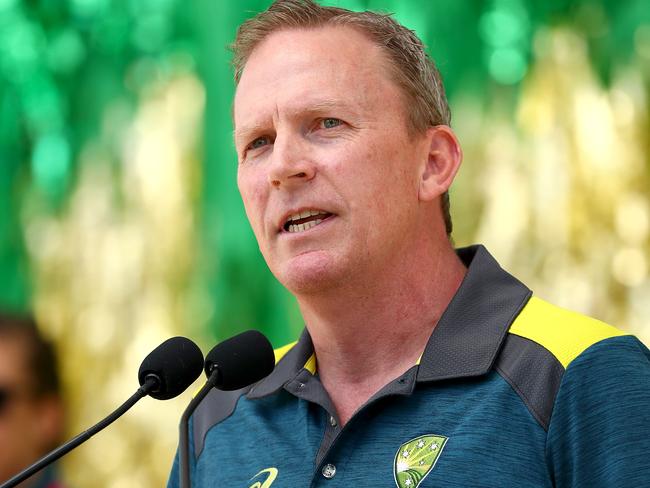
During the pay dispute Roberts direct addresses to the players via video had infuriated the ACA and marked one of the lower moments in the negotiating tactics of head office — and backfired.
During this crisis he has shown good instincts in using the Cricket Australia in-house video link to address staff, but that turned turtle when the vast majority were stood down last Friday. Many claiming they didn’t see it coming. Most feeling the talk of an inclusive culture proved just that when the crisis hit.
Imagine how Langer feels about working two days a week because he is apparently not essential to the game right now.
Roberts says the staff weren’t listening, but concedes mistakes, acknowledges they may have been a little too optimistic early doors. There are now a lot of shocked people. Shocked, shaken and angry.
Thus far Roberts has not taken the players, state associations or staff with him and his success or failure swings on doing exactly that.
Two out of three will do, but at this stage he is batting 0 from 3.
On Friday morning members of the ACA board and CA board had a tentative meeting about the situation and ground rules were established for further engagement, but there is little time to get things sorted as contracts have to be offered to the national players by June 30.
States, who were offered an initial cut to their grants of 45 per cent are now staring at 25 per cent but there is significant resistance and no compulsion to come along for the ride.
Roberts needs to bat like Ben Stokes to survive this test.
Originally published as Coronavirus: Aussie Test skipper Tim Paine says players ‘won’t be greedy’ as they face potential pay cuts
